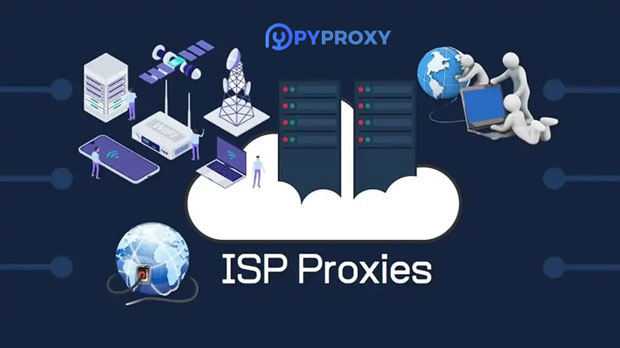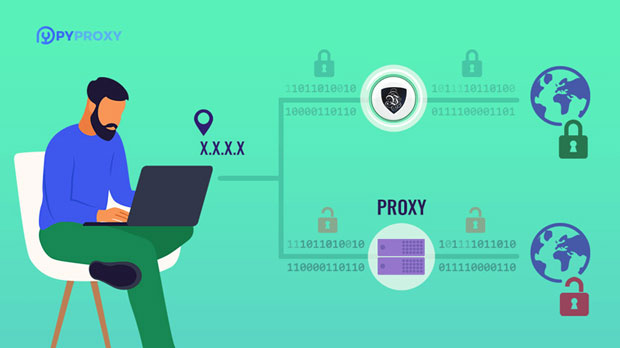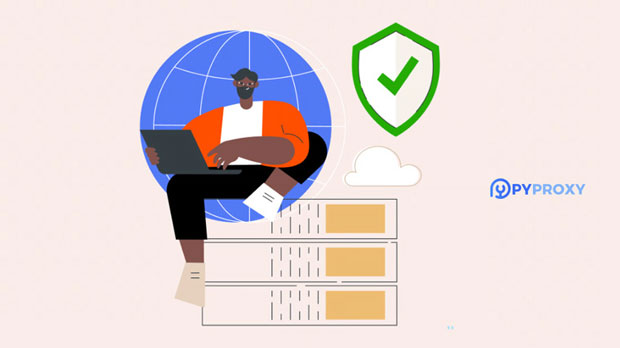Why choose PYPROXY as SOCKS5 proxy software?
When it comes to choosing the right socks5 proxy software, several factors such as speed, security, reliability, and ease of use play crucial roles in decision-making. PYPROXY stands out as an exceptional choice due to its unique set of features that meet the demands of both individual users and businesses. From offering robust privacy protection to ensuring high connection speeds, PYPROXY provides an efficient solution for users looking for a secure and fast browsing experience. In this article, we will explore the reasons why PYPROXY should be your preferred choice for SOCKS5 proxy software, and how it can enhance your online activities in a variety of ways. 1. Enhanced Security and PrivacyOne of the primary reasons to choose any SOCKS5 proxy software is its ability to protect user privacy and data. PYPROXY excels in this area by offering an advanced level of encryption, ensuring that all your internet traffic remains private and secure. When you use a SOCKS5 proxy, your IP address is masked, making it much harder for websites, applications, or third parties to trace your online activities back to you. This is particularly important for users who prioritize anonymity while browsing, engaging in online gaming, or accessing restricted content. Additionally, PYPROXY ensures that your personal information and sensitive data are not exposed to potential hackers or unauthorized entities.In a world where cyber threats are rampant, using a proxy service like PYPROXY adds an extra layer of protection against malware, phishing attacks, and data theft. It helps users bypass geographical restrictions, unblock censored content, and access region-locked services while maintaining strong security protocols.2. High-Speed Performance for Smooth BrowsingWhen selecting a SOCKS5 proxy, speed is often one of the most important factors. Slow or unreliable proxies can result in frustrating browsing experiences, especially when engaging in activities that require real-time data, such as streaming, gaming, or video conferencing. PYPROXY is designed to deliver exceptional performance with minimal latency, allowing users to browse, download, and stream without interruptions.Unlike other proxy solutions, PYPROXY ensures high-speed connections even during peak usage times, providing consistent and reliable internet access. This makes it a great choice for professionals, content creators, and anyone who depends on uninterrupted internet access for their daily tasks.Moreover, PYPROXY is optimized for low-latency connections, which is essential for gamers who need a fast response time for multiplayer sessions. This ensures that users can enjoy a seamless and lag-free experience, regardless of their location.3. Easy Setup and User-Friendly InterfaceAnother key benefit of PYPROXY is its user-friendly interface, which makes the setup process simple and accessible for users of all experience levels. Whether you are a novice or an advanced user, the software is designed to be intuitive and straightforward. With just a few clicks, you can configure and connect to the proxy, ensuring that you can start browsing securely and quickly.Many SOCKS5 proxy services require complicated configuration or advanced technical knowledge, but PYPROXY eliminates this hurdle by offering an easy-to-navigate interface. The straightforward setup allows users to focus on enjoying their internet activities without the stress of troubleshooting or dealing with complex configurations.Additionally, PYPROXY offers comprehensive support resources, including guides and FAQs, to assist users during the installation and usage process.4. Compatibility with Multiple Devices and ApplicationsPYPROXY is not only compatible with a wide range of devices but also supports various applications and protocols. Whether you are using a Windows PC, Mac, Linux, or mobile devices like smartphones and tablets, PYPROXY provides a seamless experience across multiple platforms. This cross-device compatibility is essential for users who require flexibility and want to access their proxy service on different devices without any hassle.Furthermore, PYPROXY integrates smoothly with different software applications, including web browsers, email clients, and even torrent clients. This level of versatility ensures that users can protect their privacy and security no matter what online activity they are engaged in.In addition, PYPROXY works well with a variety of operating systems, ensuring that it fits into any user’s preferred environment. Whether you're using a popular browser like Chrome or Firefox, or a specialized application for gaming or media streaming, PYPROXY adapts to your needs with ease.5. Bypassing Geo-Restrictions and Accessing Blocked ContentA major advantage of using a SOCKS5 proxy like PYPROXY is the ability to bypass geo-restrictions and access content that may be blocked in certain regions. Many websites, streaming platforms, and online services impose geographical restrictions on their content, limiting access to users from specific countries. With PYPROXY, users can easily change their IP address and appear as though they are located in a different region, allowing them to access content that would otherwise be unavailable.This feature is especially useful for individuals who wish to access international content on streaming platforms like video-on-demand services, music platforms, or news websites. Additionally, users can access sites or services that are blocked due to government censorship or local internet regulations.By enabling users to access the internet freely and without restrictions, PYPROXY opens up a world of possibilities for those seeking an uncensored online experience.6. Reliable Customer Support and Continuous UpdatesA critical consideration when selecting SOCKS5 proxy software is the level of support offered. PYPROXY stands out in this area by providing reliable customer support and continuous software updates. Users can reach out for assistance if they encounter any issues or need guidance on configuring their proxy settings.The team behind PYPROXY is committed to ensuring that users have the best experience possible, providing timely updates to enhance performance and security. Regular software updates also mean that any vulnerabilities are quickly addressed, ensuring that users remain protected against emerging cyber threats.Furthermore, the PYPROXY support team is accessible through multiple channels, including email and live chat, offering prompt and helpful responses to user inquiries.7. Cost-Effectiveness and Value for MoneyWhen compared to other SOCKS5 proxy solutions, PYPROXY offers excellent value for money. Despite its wide range of features, including high-speed performance, robust security, and cross-platform compatibility, PYPROXY is priced competitively. This makes it an attractive option for users who want high-quality proxy services without breaking the bank.Whether you are an individual user or part of a business looking for scalable solutions, PYPROXY provides affordable pricing plans that can meet a variety of needs. The software’s cost-effectiveness does not compromise on performance or quality, ensuring that users receive the best value for their investment.ConclusionIn conclusion, PYPROXY stands out as a reliable and feature-rich SOCKS5 proxy solution that offers exceptional speed, security, and ease of use. Whether you are an individual looking for privacy and anonymity or a business in need of a scalable proxy solution, PYPROXY delivers on all fronts. Its user-friendly interface, high-performance capabilities, and robust security features make it a top choice for anyone seeking an efficient and reliable SOCKS5 proxy service.By choosing PYPROXY, you can enjoy a secure and fast online experience, free from geographical restrictions and privacy concerns, while also benefiting from reliable customer support and continuous updates.
2024-12-31

























































